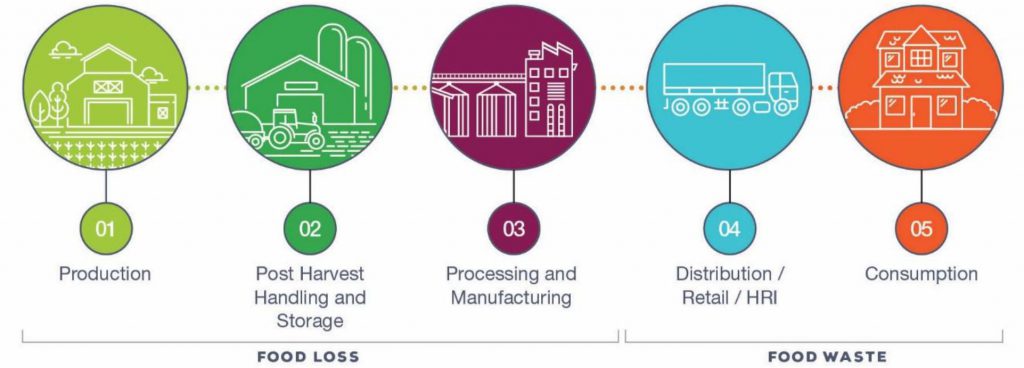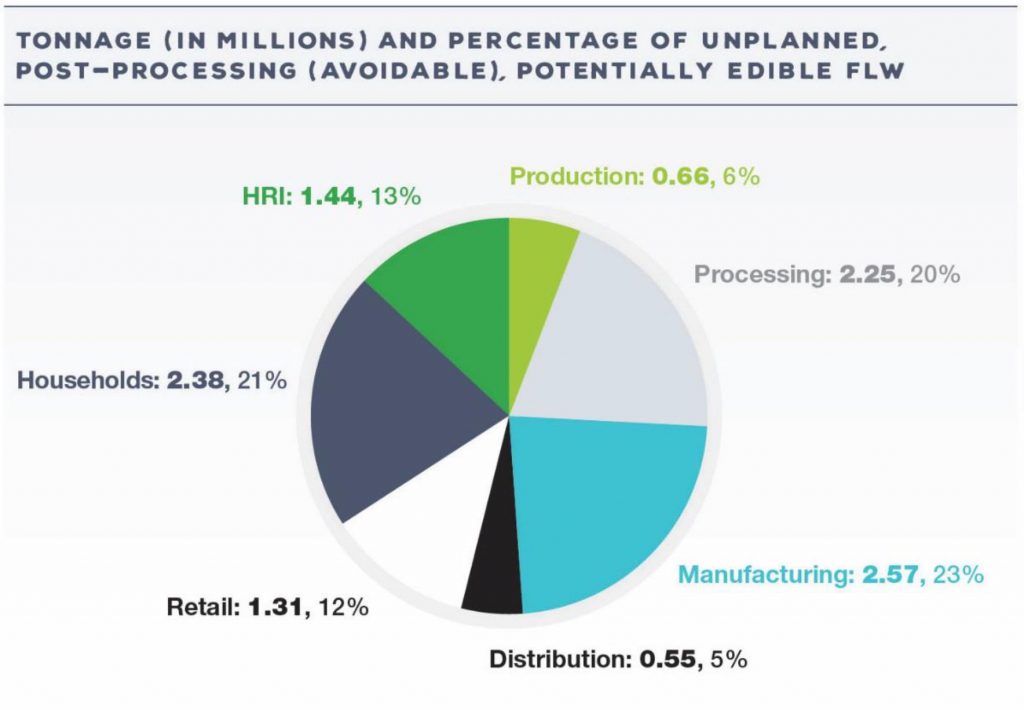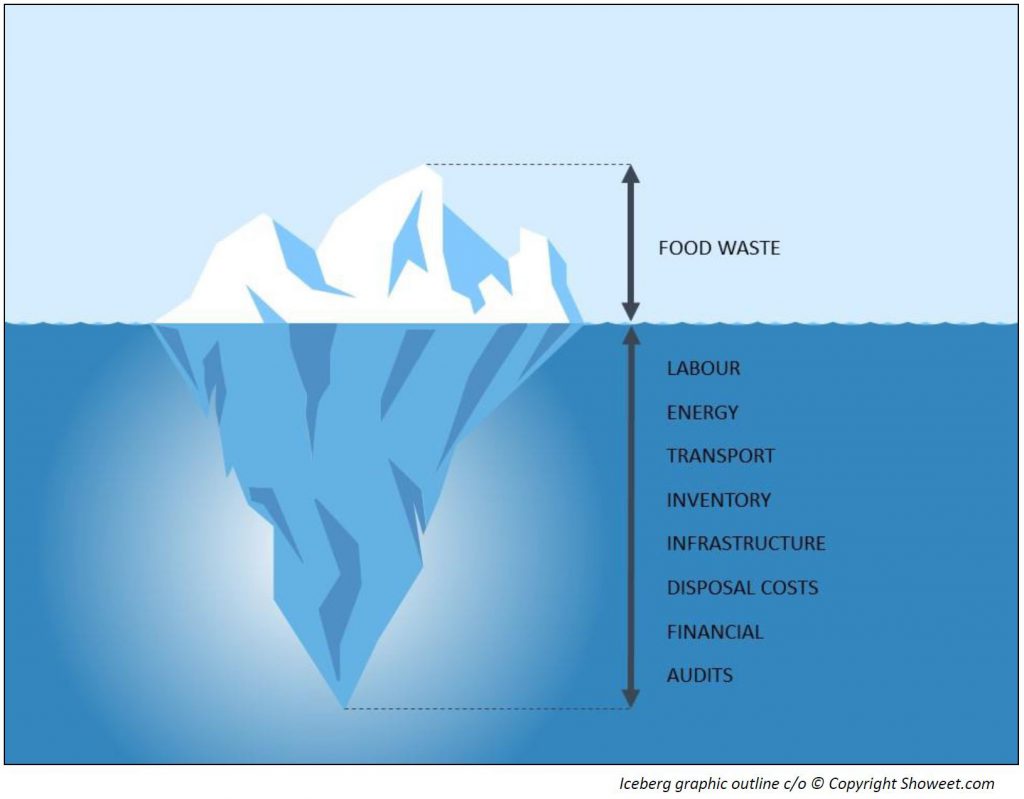Food Waste - Canada's Annual $100 Billion Problem
There are two forms of Food Loss and Waste (FLW) in the value chain:
- planned (unavoidable) – e.g. animal bones, losses when milling grains
- unplanned (avoidable) – e.g. apples not purchased in the retail store due to having been bruised in transit
The biggest opportunity of the value chain is to prevent the food waste; reducing avoidable FLW also helps to reduce planned FLW due to less production needed for the same outcome.

Canadian food chain by numbers – annual values for food waste and its impact (2016):
- Canada’s agri-food business generated CAD $111.9 Billion GDP (6.6% of total GDP)
- Total avoidable and unavoidable annual FLW = 35.5 million metric tonnes
- Avoidable FLW = 32% of total FLW (11.2 million metric tonnes, the weight of almost 95 CN Towers)
- The value of avoidable FLW, based on the consumer value of food, is CAD $49.5 Billion, which is the equivalent of 3% of Canada’s GDP, or 51.8% of money spent in 2016 by Canadians on food in retail stores, and would feed every person living in Canada for almost 5 months
- Total FLW is over CAD $100 Billion
- Greenhouse gas footprint of FLW = 56.5 million tonnes of CO2 equivalent
- Blue water (surface and ground water) footprint of avoidable FLW = 1.4 billion tonnes
- Blue water footprint of total FLW = almost 60% of food industry’s blue water footprint


The UN Food and Agriculture Organization (FOA) estimates that the value of food wasted is only 29% of the true cost of food waste, which includes additional labour, energy, financial charges, disposal fees, markdowns, repackaging, transportation etc.
All these costs affect the business profitability and ultimately the price that consumers pay for food.

FLW is a systemic issue that results from how the food chain presently operates, therefore can be addressed by tackling the underlying assumptions, values and practices that determine how the current system operates. Current ways to minimize the food wast are composting and donation to food banks, too little is done to eliminate the food waste in first place. Preventing FLW at source is the first and most important step to solve this problem.
Food&Beverage industry is a low margin business with a volume-driven competitive model. The increased net margins for produce and meat are necessary to cover for food spoilage.
Food waste is not THE Problem, but A Symptom of an uncoordinated Supply Chain System.
Impact of Supply Chain Characteristics on Food Waste and Profitability
- Current state of the supply chain: adversarial relationships, uncoordinated supply chain systems, slim margins and profits
- Suppliers are charged “allowances” to cover for food waste
- A collaborative environment promotes accountability and constructive relationships
- An impact on waste reduction, thus performance and profitability was determined when working within a collaborative framework

Eliminating / reducing the food waste is possible only in a collaborative environment (SCOPE). The current paradigm is one of uncoordinated supply chains between players. The suppliers are charged “allowances” to cover for the food waste; this system does not promote accountability through the supply chain to find ways to reduce waste. The farmers suffer the most from this practice of penalizing suppliers up the chain.
Sharing the supply chain information, all parties can work together to reduce waste and improve profitability and product quality.
The information above is based on studies performed by Value Chain Management International and Second Harvest between 2014 and 2019.
